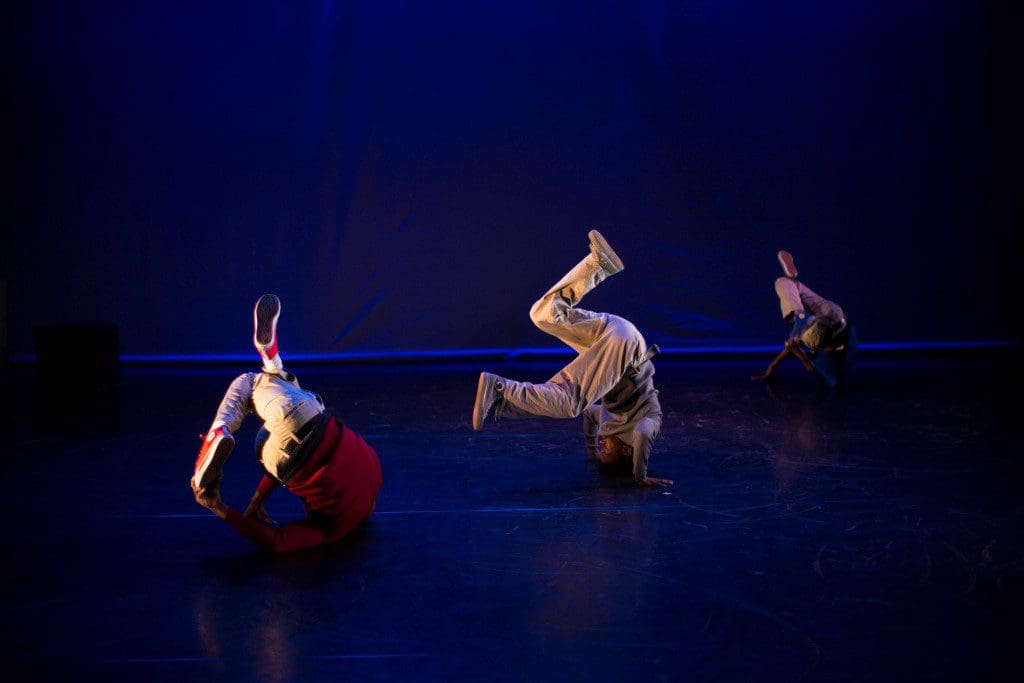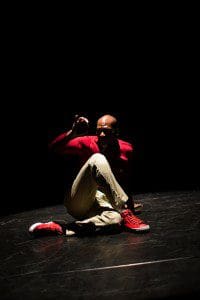Breaking Down Breaking
Before we begin, let’s remove the word “breakdancing” from our vocabularies. According to practitioners and enthusiasts of the art form, the term is an ignorant one, rooted in the media’s exploitative representation of the style. It is thick with commercial connotations and an air commodification. So, trade breakdancing for “breaking,” “b-boying,” or “b-girling” instead. The exact origin of breaking does not have a single narrative, but there are two likely sources. The more obvious of the two is that the term resonates with breakbeats, the rhythmic breakdown sections of tracks DJs would loop to accompany dancers. However, DJ Kool Herc—one of if not the architect of hip-hop music’s foundational sound—pointed out that breaking was 1970s slang for “getting excited,” “acting energetically,” or “causing a disturbance,” all of which seem quite fitting for a dance style that often sees its artists bringing their performance to any public space that can contain it. Even more so when you apply them to the concept of a cypher, the circle formed by a convening audience around breakers engaged in dance battles. Spectacle has always been essential in breaking, for keeping an audience engaged and winning battles, but what happens when breakers get older and the wild kineticism they were able to achieve in their youth becomes physically reckless? Now that we’ve dropped the superfluous “—danc(e),” we can move on to Raphael Xavier.
This weekend (Feb. 11-13), the renowned Philadelphia artist will bring his latest performance piece, The Unofficial Guide to Audience Watching Performance, to FringeArts and we could not be more excited. Xavier is a major figure in the Philadelphia dance scene as well as an accomplished artist across various other mediums. He’s a photographer, rapper/producer, actor, comedian, writer, and likely some other things we don’t know about, but even now as he reaches middle-age, breaking remains central to his identity as an artist. The Unofficial Guide stands as a culmination of his artistic experiences, finding Xavier drawing on them all to tell the story of an artist begrudgingly turned substitute teacher trying to properly convey his art to his class. “Bringing all my skill sets together to tell a 75% real life and 25% fictitious story actually equates to a 100% real life story from age thirteen to forty-five,” Xavier told FringeArts in a recent interview. “Each moment of my life and each moment I spend dancing on many stages around the world went into creating this work and the elements that put it together.”
To properly exhibit some of the more physically astounding, but taxing movements that become increasingly difficult with age, Xavier is accompanied by two other dancers representing his character’s younger selves. He deconstructs their movements by freezing, slowing down, exaggerating, and explaining them, all of which stands in contrast to the fast paced, frenetic energy that generally characterizes breaking, but also offers a unique opportunity to deepen one’s understanding of the nuances of an often overlooked art form. “[Other hip-hop companies] took the battle/street mentality and brought it to the stage and everything began to look the same,” Xavier noted, pointing to The  Unofficial Guide’s freedom in exploring breaking on stage in such an instructive manner. “The structure of the work was about me telling a clear story so audiences could finally get my work.”
Unofficial Guide’s freedom in exploring breaking on stage in such an instructive manner. “The structure of the work was about me telling a clear story so audiences could finally get my work.”
Though it seems prudent to leave most of the explaining to Xavier, I thought I’d share a brief explanation of the major elements of the breaking along with some illustrative videos to give you a sense of what it looks like and what to look for when watching it. These components are merely the framework of the art form upon which individual dancers build their own personal style. Before we get into it though, it seems worth pointing out that some notable breakers have objected to the proliferation of breaking videos on the internet, claiming that it has caused a decrease in diversities of styles. Rather than being influenced by their immediate breaking scenes, dancers are now being influenced by the same videos. As b-boy Luis “Alien Ness” Marinez puts it, “I’ve been all around the world, ya’ll been all around the world wide web.” So, to any potential breakers out there—and I’m sure most, if not all of you readers are—don’t let this brief crash course send you down an internet rabbit hole of breaking education. Instead, come see The Unofficial Guide this weekend to get a literal lesson from a true master of the art. Then go battle someone.
Major elements of breaking
Toprock is performed from a standing position and focuses on footwork. It requires a strong mixture of coordination, flexibility, rhythm, and of course, style. Breakers generally open sets with it as it serves as good preparation for the more physically involved movements that tend to follow, but it also gives them a chance to establish their style for the audience before executing more acrobatic moves where style is less discernable.
Downrock, similar to toprock, is focused on footwork, but movements occur on the floor and breakers supporting themselves with hands and feet (some more complex variations also include knees). Speed and coordination are both key to pull off these more physically involved moves. Note the first section of this trailer for THE UNOFFICIAL GUIDE TO AUDIENCE WATCHING PERFORMANCE:
Power moves are the aforementioned acrobatics. They rely on momentum, speed, endurance, strength, and control, and breakers often use them as centerpieces for their sets. Some types of power moves include spins, handstands, floats (balancing on hands, parallel to floor), swipes, and windmills. Many are borrowed or adapted from gymnastics or martial arts. This family takes power moves to a whole new level:
Freezes are stylish, often balance-intensive poses. Breakers often use them to signal the end of their sets, but they are also employed to emphasize strong beats of whatever music is accompanying. Some breakers might string a series of freezes into a “stack” to hit the beats of the music and exhibit their strength and sense of rhythm.
As an added bonus, enjoy this brief video of the New York City Breakers, an influential breaking crew that Xavier has cited as a childhood inspiration, on the Soul Train sometime in the 1980s:
The Unofficial Guide to Audience Watching Performance runs at FringeArts February 11-13. Click here for more information and to get your tickets.
—Hugh Wilikofsky




